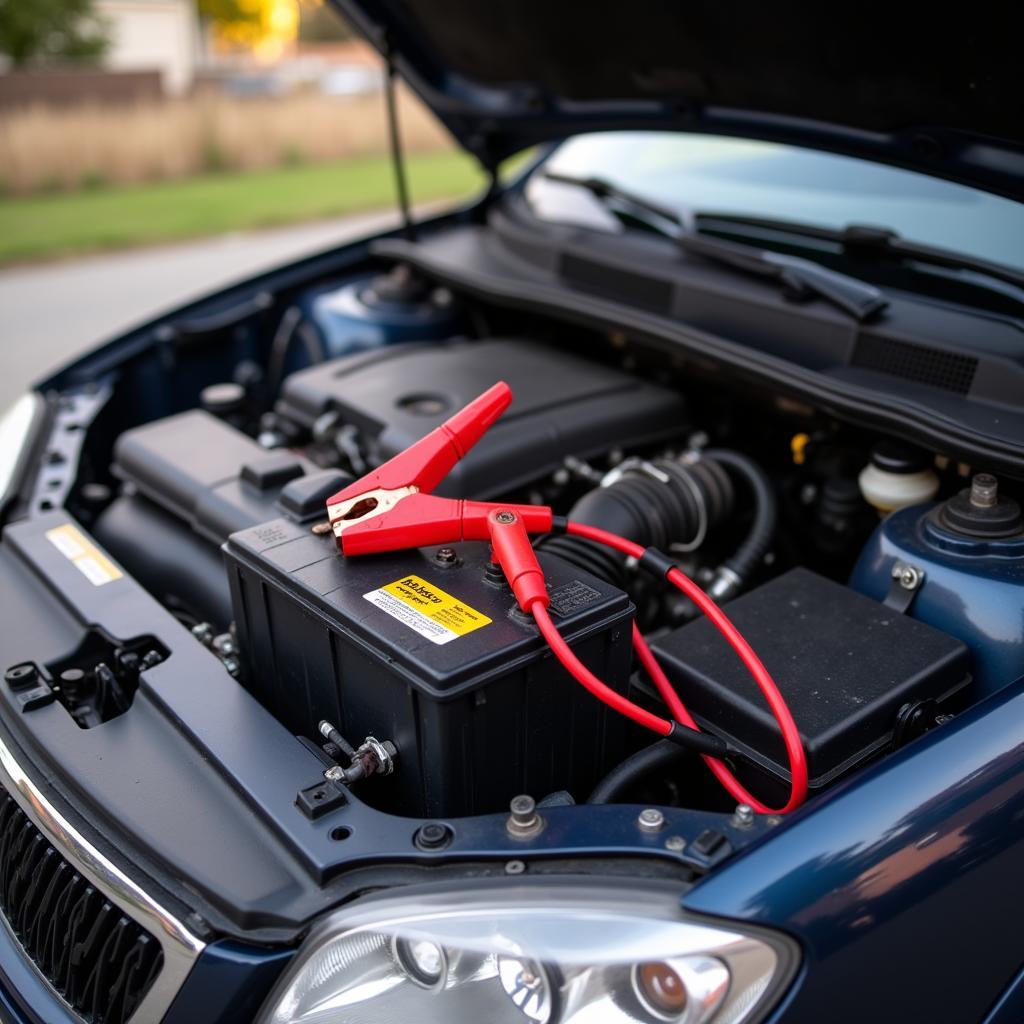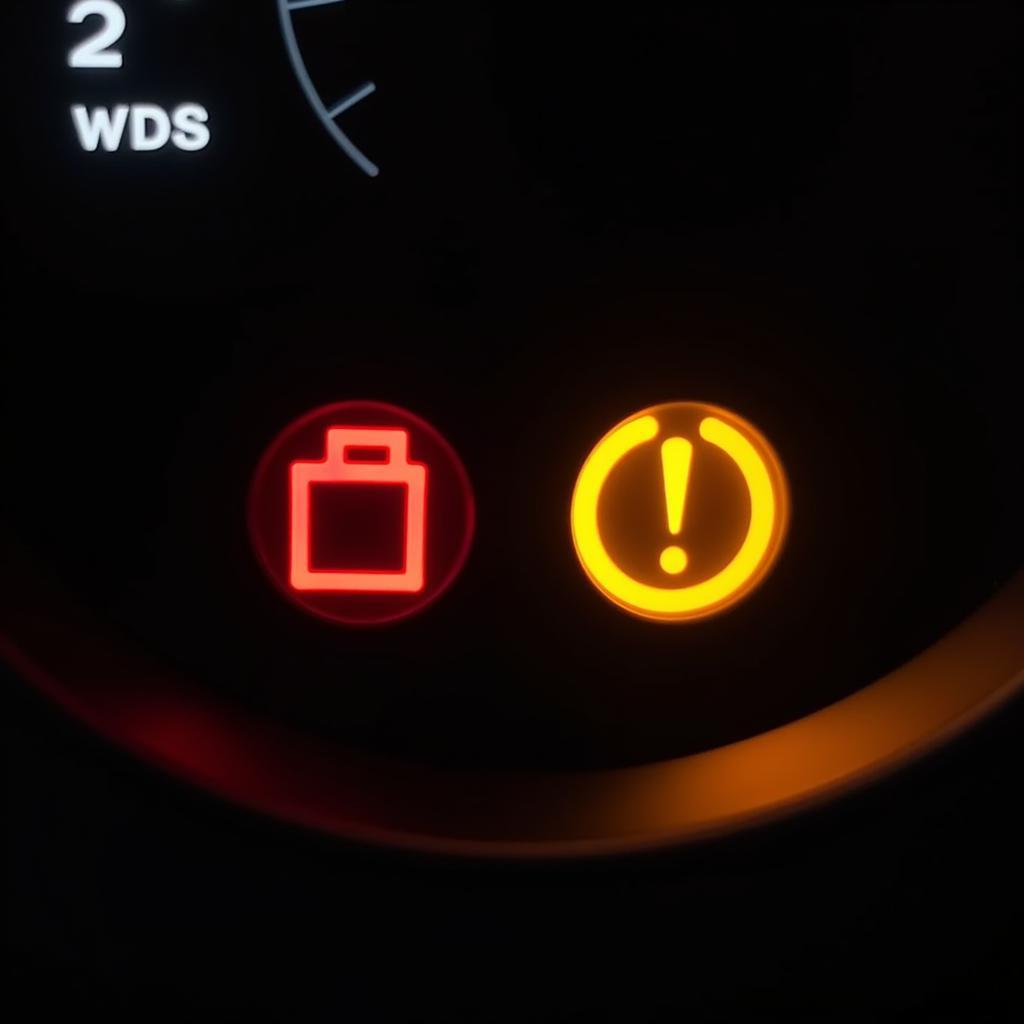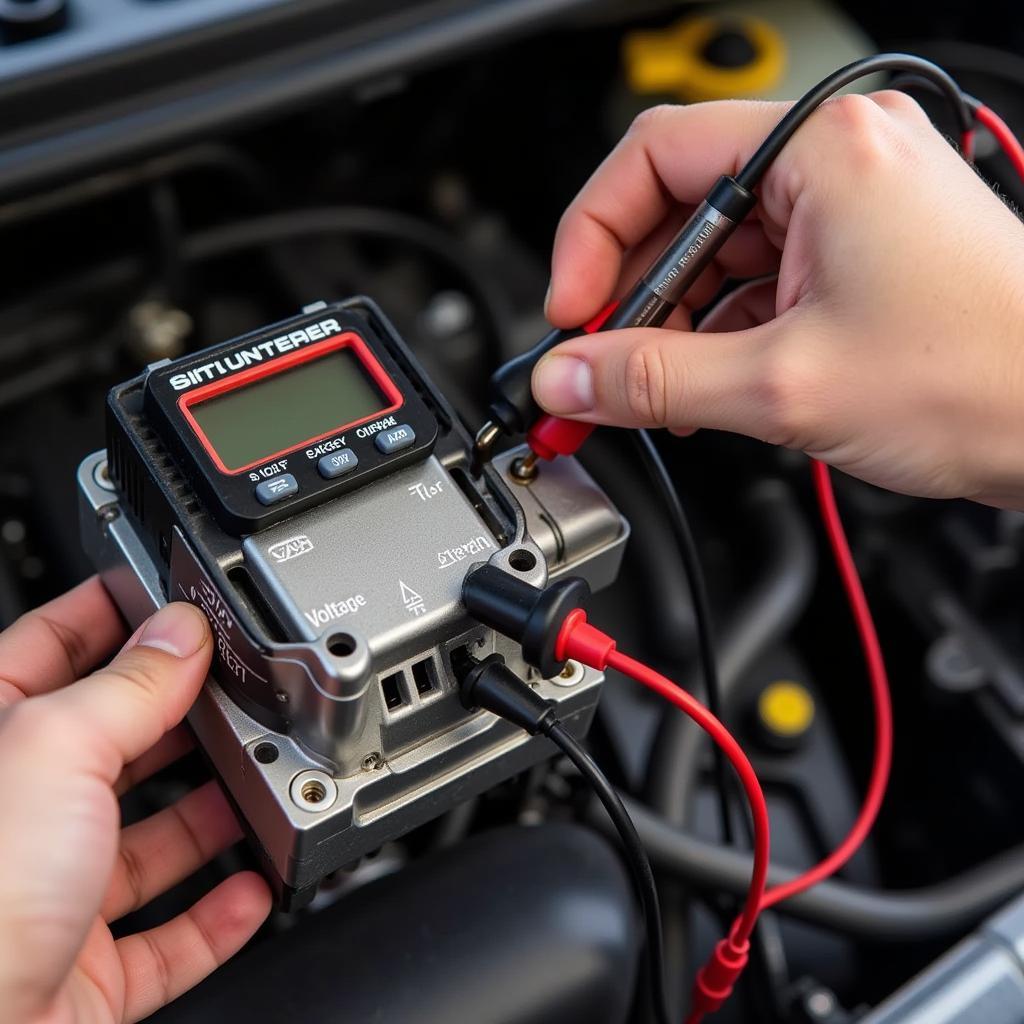Your car won’t start even with a jump? Don’t panic, this is a common issue and there are several reasons why this could be happening. This article will guide you through the most common causes and provide solutions, from simple checks to more advanced troubleshooting steps.
 Car Battery Jump Start Failed
Car Battery Jump Start Failed
One common culprit is corroded battery terminals. Check your terminals for any buildup and clean them with a wire brush and baking soda solution if needed. Sometimes, the problem isn’t the car battery itself, but the jumper cables. Ensure the cables are properly connected and in good condition. A frayed or damaged cable can prevent the necessary power transfer for a successful jump. car not starting even with jump describes this in more detail.
Why Won’t My Car Start After a Jump?
Several factors can contribute to a car not starting even after a jump start. Aside from a dead or faulty battery, the problem could stem from a faulty alternator, starter, or even a wiring issue. Let’s delve into the possible reasons:
- Dead Battery: Even after a jump, if the battery is completely dead, it may not hold a charge.
- Faulty Alternator: The alternator charges the battery while the engine is running. A faulty alternator can drain the battery and prevent a jump start from being effective.
- Starter Problems: The starter is responsible for cranking the engine. If it’s malfunctioning, the car won’t start even with a jump.
- Bad Wiring or Connections: Corroded or loose connections can disrupt the flow of power, rendering a jump start useless.
- Fuel Pump Issues: If the fuel pump is not working properly, fuel won’t reach the engine, preventing it from starting.
- Ignition System Problems: Issues with the ignition system, such as a faulty ignition switch or coil, can also prevent the car from starting.
“A surprisingly common issue we see is drivers not letting the donor car run long enough when jump-starting,” says Michael Davies, Lead Automotive Diagnostic Technician at Davies Auto Solutions. “Five minutes is a good rule of thumb to allow for some charge transfer before attempting to start the stalled vehicle.”
Troubleshooting a Car That Won’t Start With a Jump
If your car will not start with jump, here’s a step-by-step guide to troubleshoot the problem:
- Check the Jumper Cables: Make sure the cables are securely connected to both batteries, paying attention to positive (+) and negative (-) terminals.
- Inspect the Battery Terminals: Look for corrosion or loose connections. Clean the terminals with a wire brush and baking soda solution.
- Let the Donor Car Run: Allow the donor car’s engine to run for a few minutes before attempting to start your car.
- Try Starting Your Car: If it doesn’t start, try again after a few more minutes.
- Check the Starter: If you hear a clicking sound when trying to start the car, the starter might be the issue.
- Inspect the Alternator: Have the alternator tested at an auto parts store to see if it’s charging correctly.
- Check for Fuel: Ensure there is fuel in the tank. If necessary, add more fuel and try starting again.
car battery dead jump start not working provides further troubleshooting tips.
How to Prevent Jump Start Issues
Regular car maintenance can help prevent jump start issues. Here are some preventative measures:
- Regular Battery Testing: Test your battery regularly to ensure it’s holding a charge. Replace it every 3-5 years.
- Alternator Checks: Have your alternator checked during routine maintenance.
- Clean Battery Terminals: Keep the battery terminals clean and free of corrosion.
- Proper Jump Start Procedure: Follow the correct jump start procedure to avoid damaging the electrical system.
jump start not starting car provides more in-depth information on this topic.
Conclusion
Experiencing a car that will not start with jump can be frustrating. However, by understanding the common causes and following the troubleshooting steps outlined in this article, you can often identify and fix the problem yourself. Remember, preventative maintenance is key to avoid such issues in the future. If you’re still having trouble, don’t hesitate to seek professional help. car not starting with jump start and jumper cables not starting car can be valuable resources for more advanced diagnostic information.
“Regular maintenance can significantly extend the life of your car’s electrical components and save you from unexpected roadside emergencies,” advises Maria Sanchez, an experienced auto electrician with over 20 years in the field. Her words highlight the importance of proactive car care.
FAQ
- Can a completely dead battery be jump-started? While you can attempt a jump, a completely dead battery may not hold a charge and might require replacement.
- How long should I let the donor car run before starting my car? Let the donor car run for at least 5 minutes to allow some charge transfer.
- What if my car still won’t start after a jump? The problem could be with the starter, alternator, or other electrical components. Further diagnosis may be needed.
- How often should I test my car battery? It’s a good idea to test your battery every few months and replace it every 3-5 years.
- How can I prevent future jump start issues? Regular maintenance, including battery and alternator checks, can help prevent jump start problems.
- Is it safe to jump-start a car with a different engine size? Yes, as long as both vehicles have a 12-volt electrical system.
- What are the signs of a bad alternator? Dim headlights, flickering dashboard lights, and a whining sound from the engine compartment are common signs.


